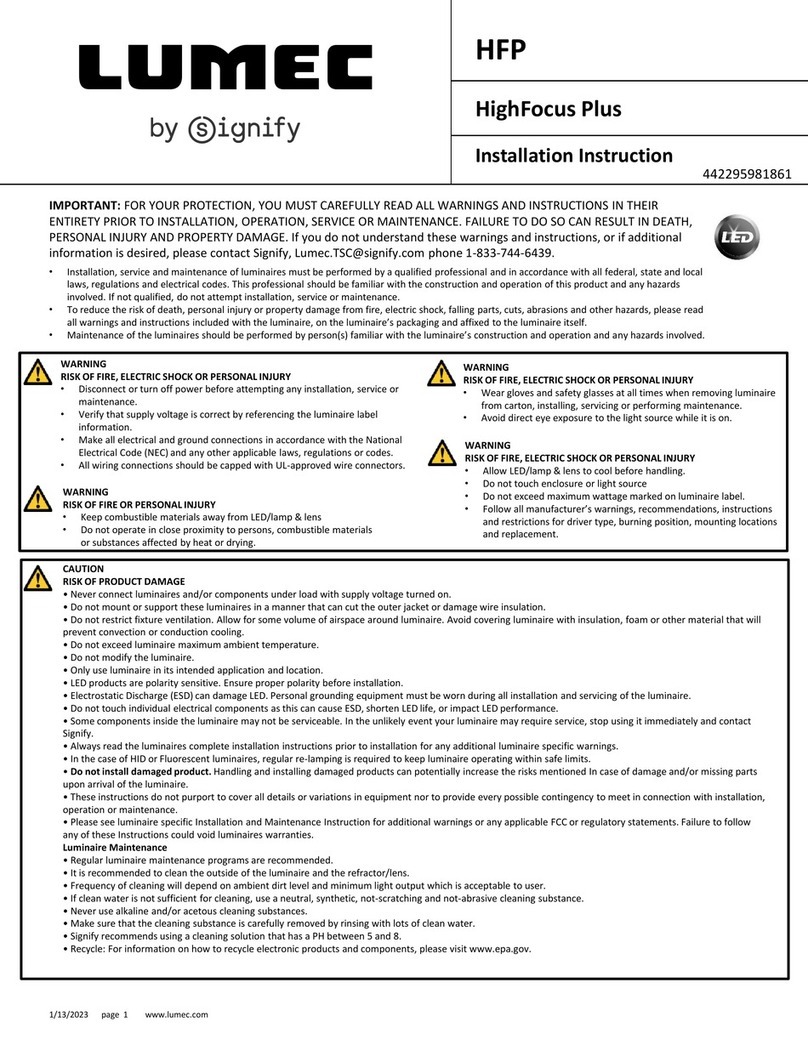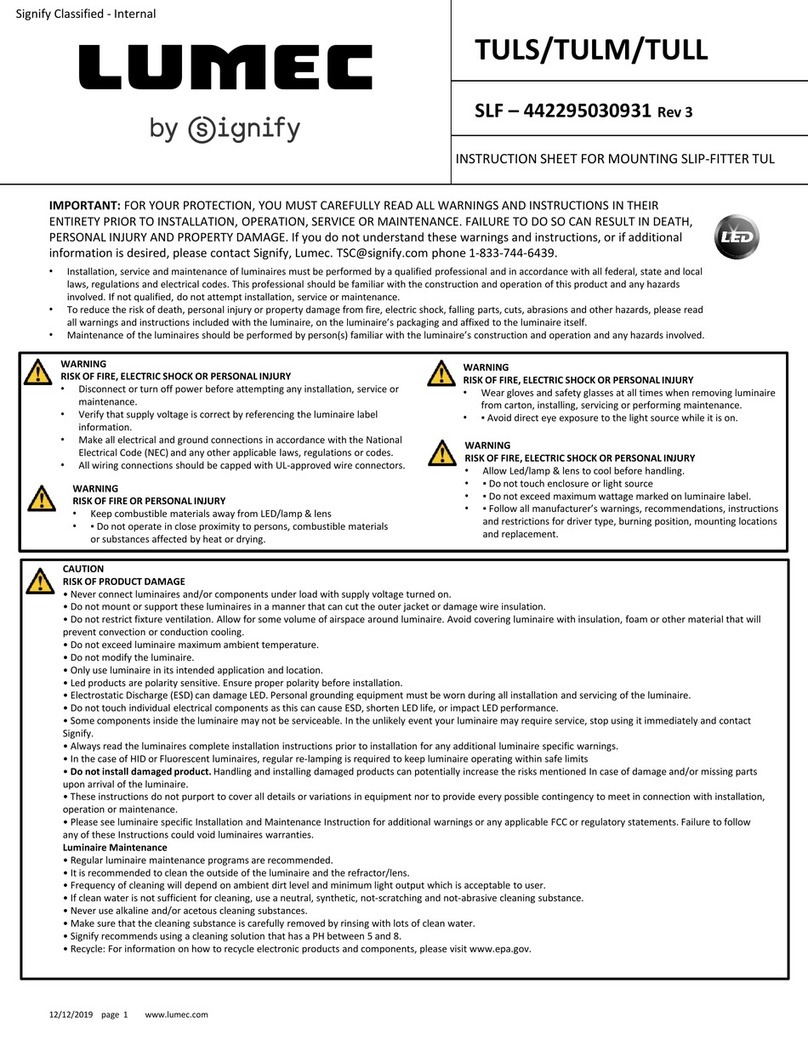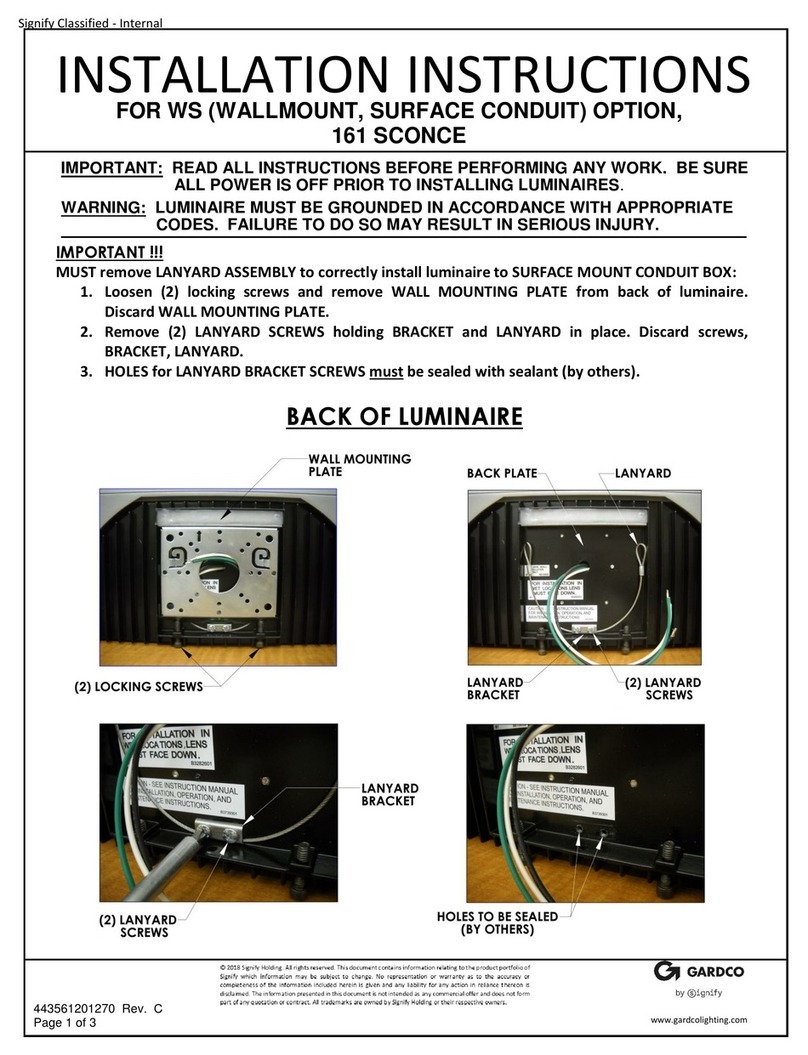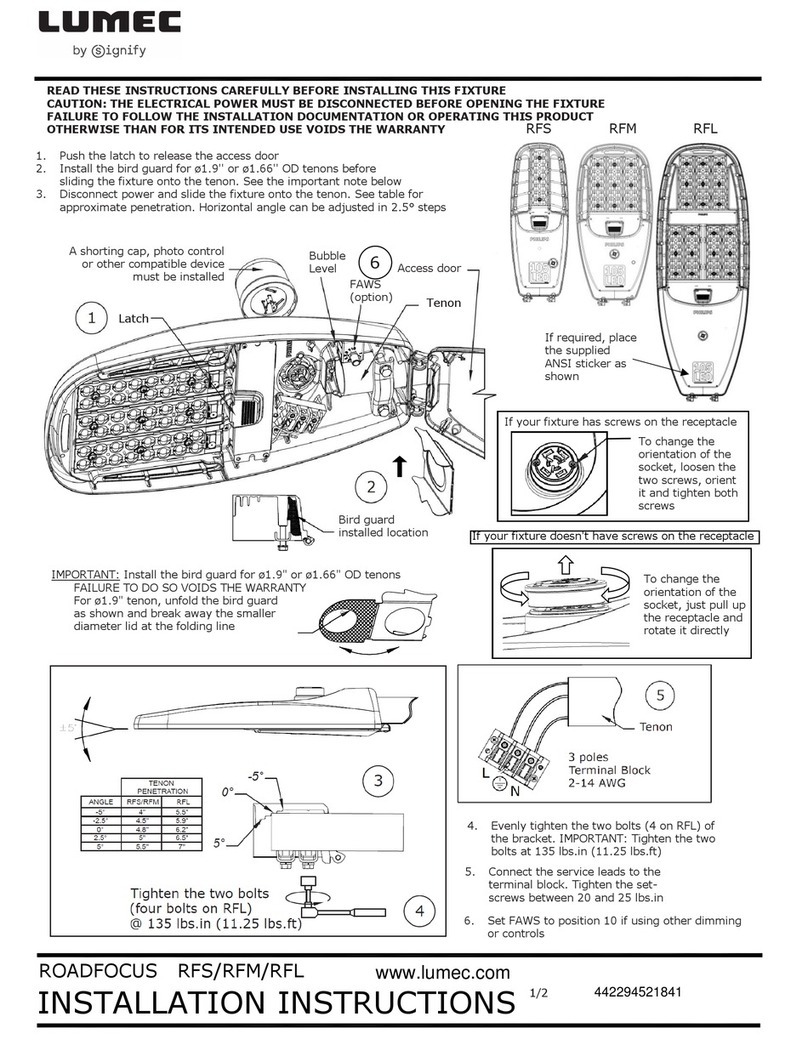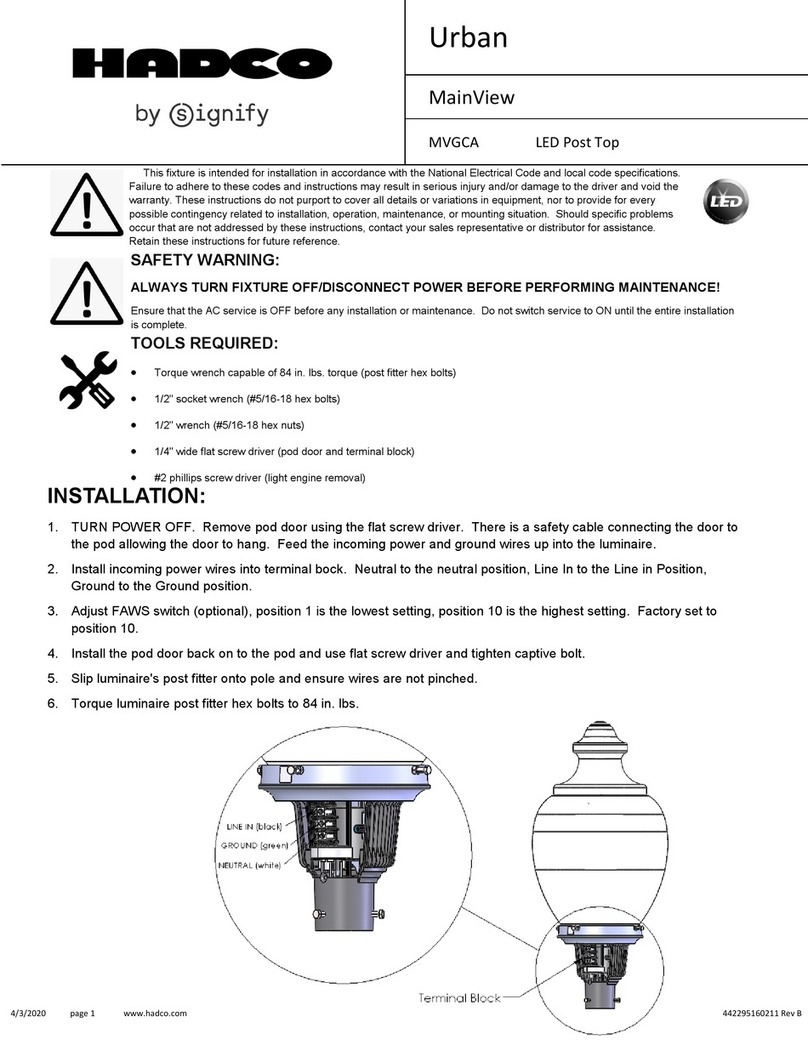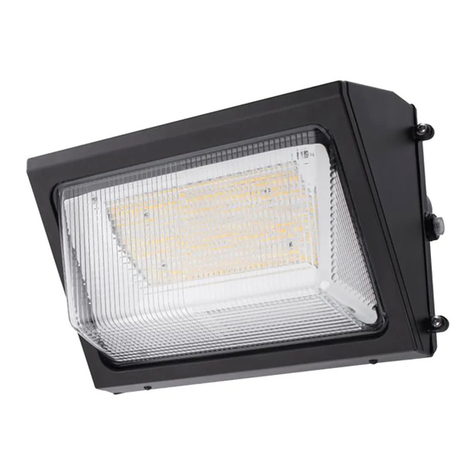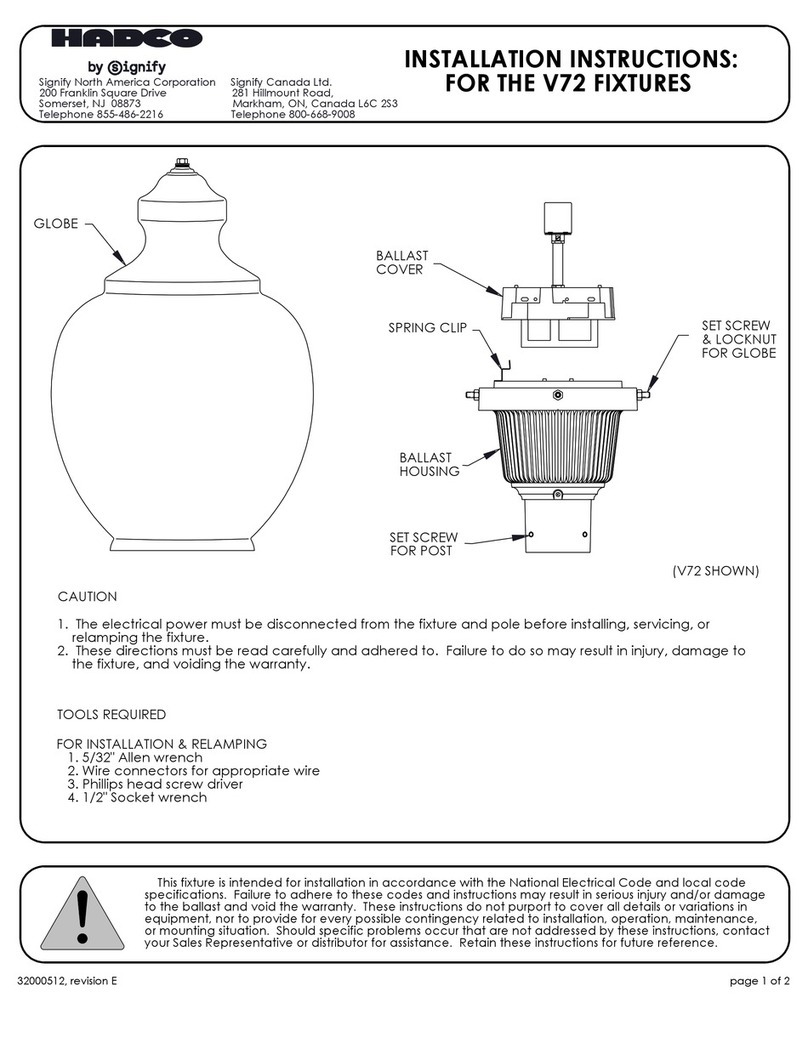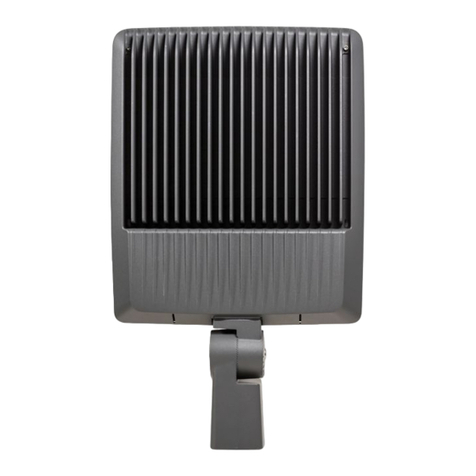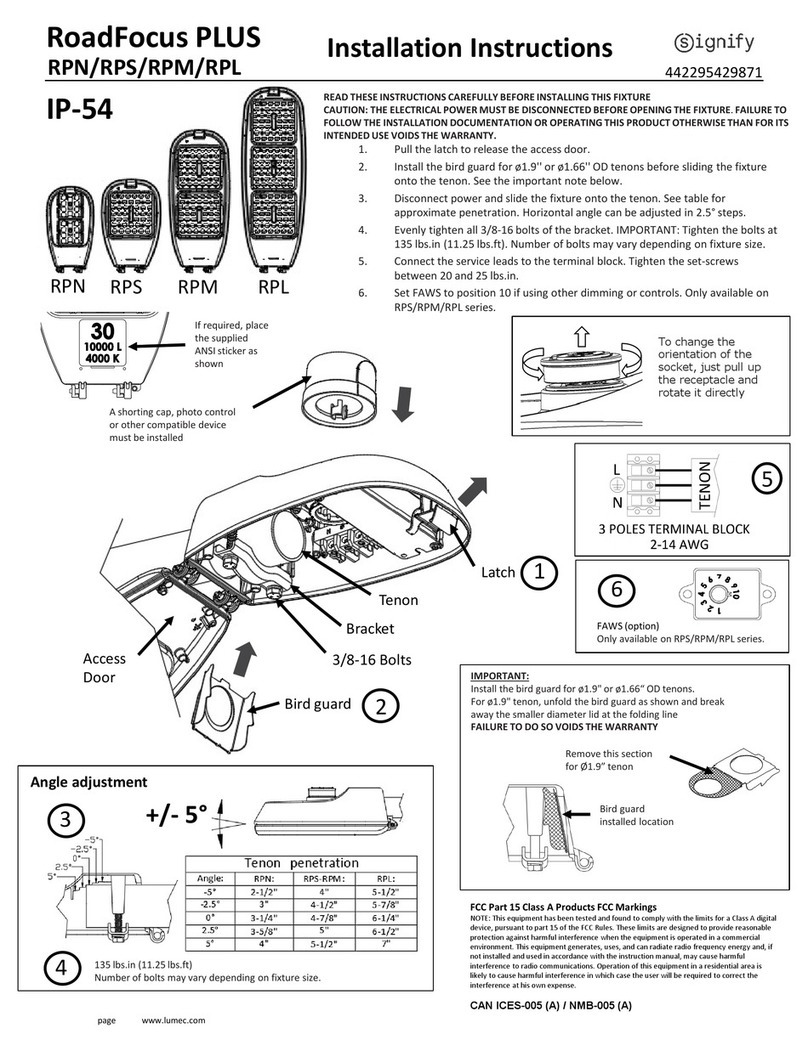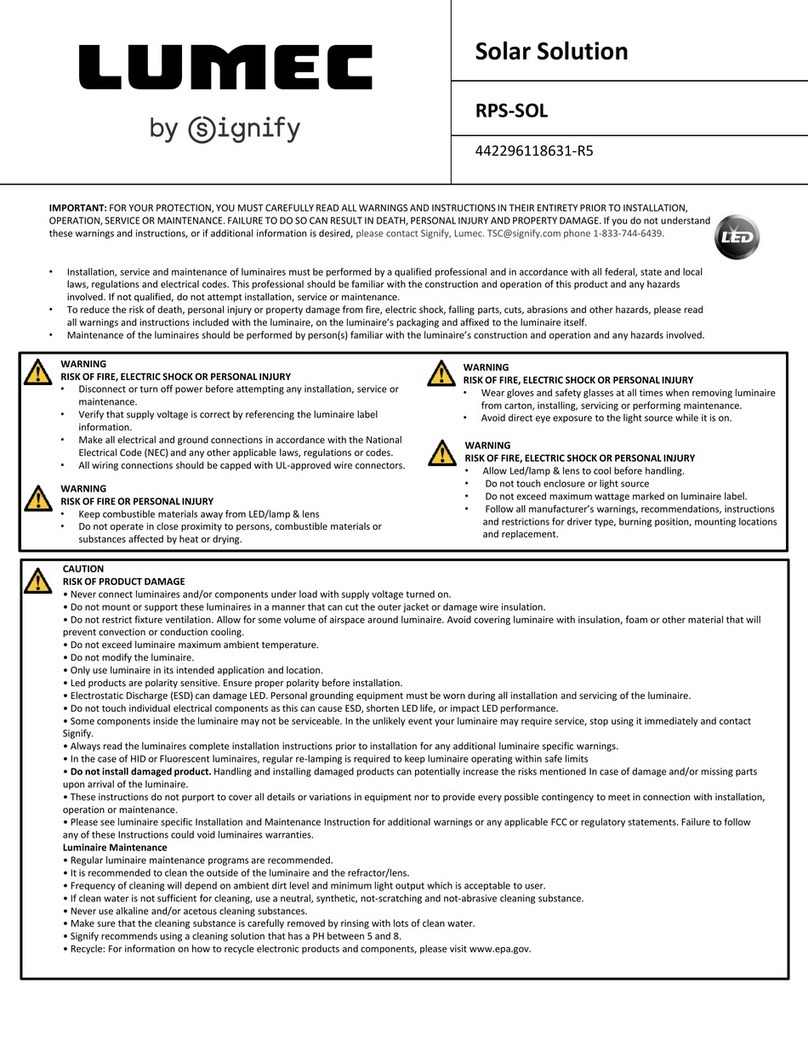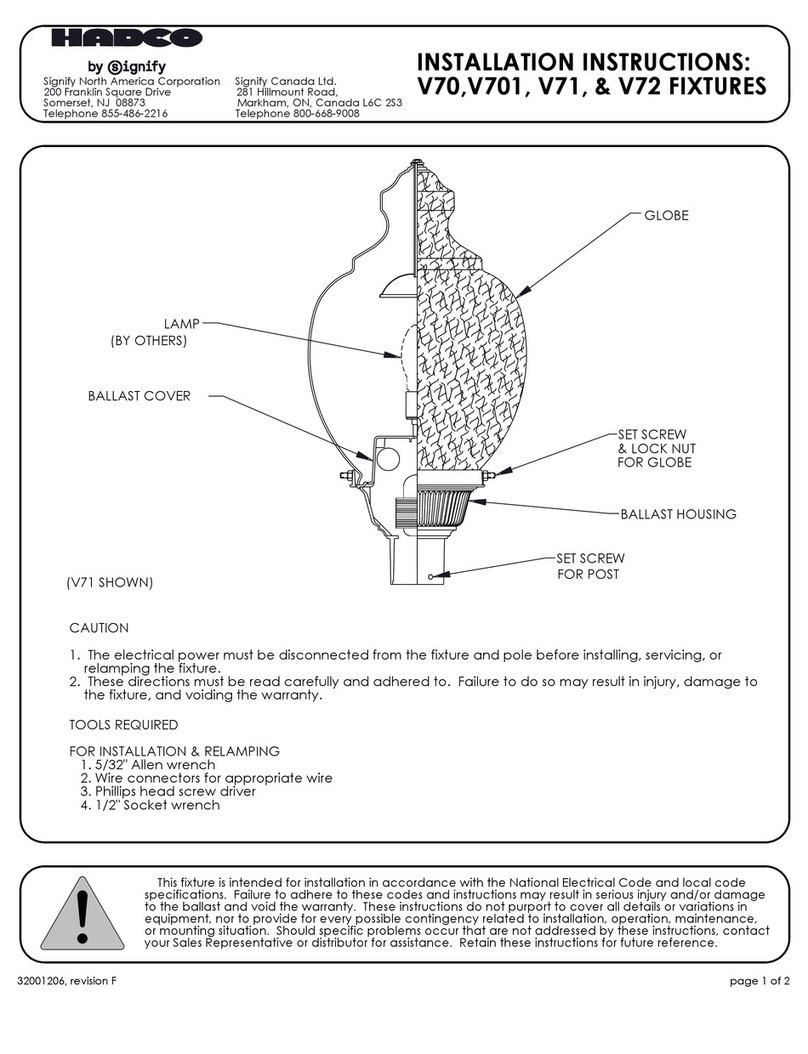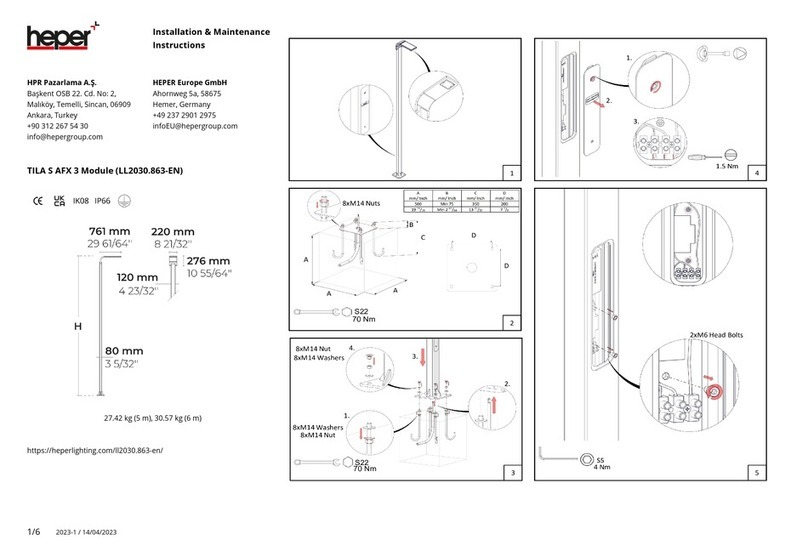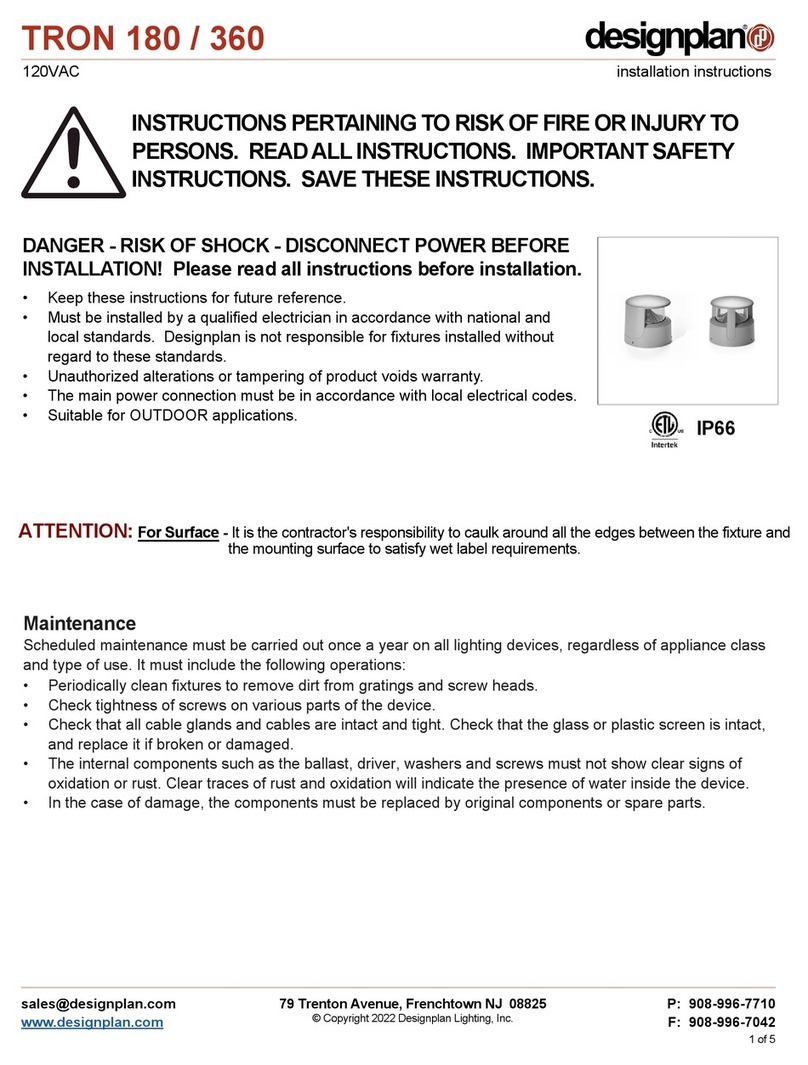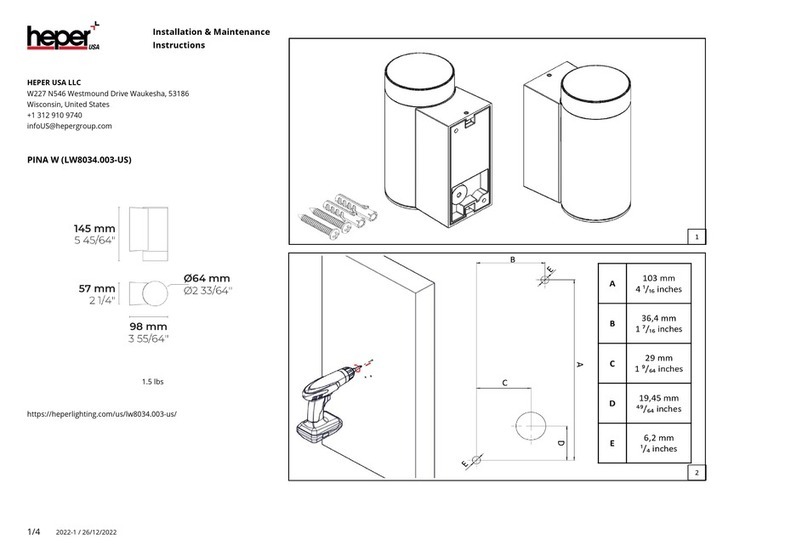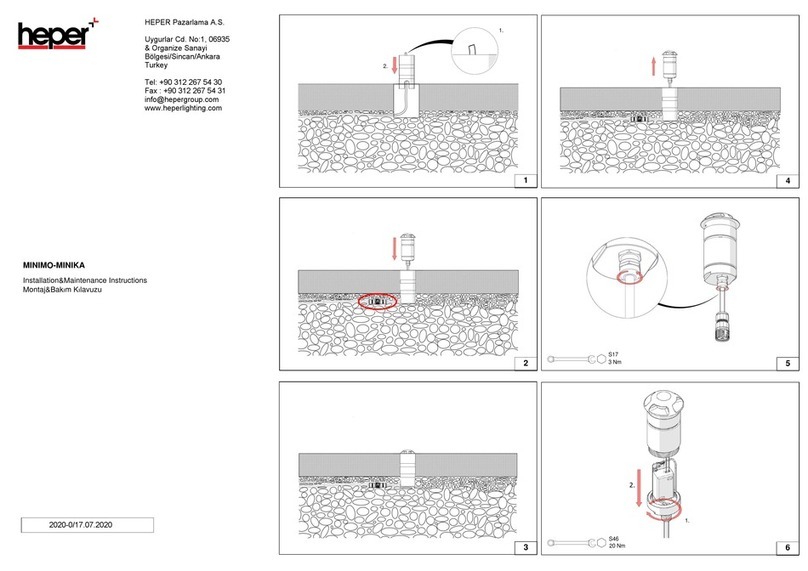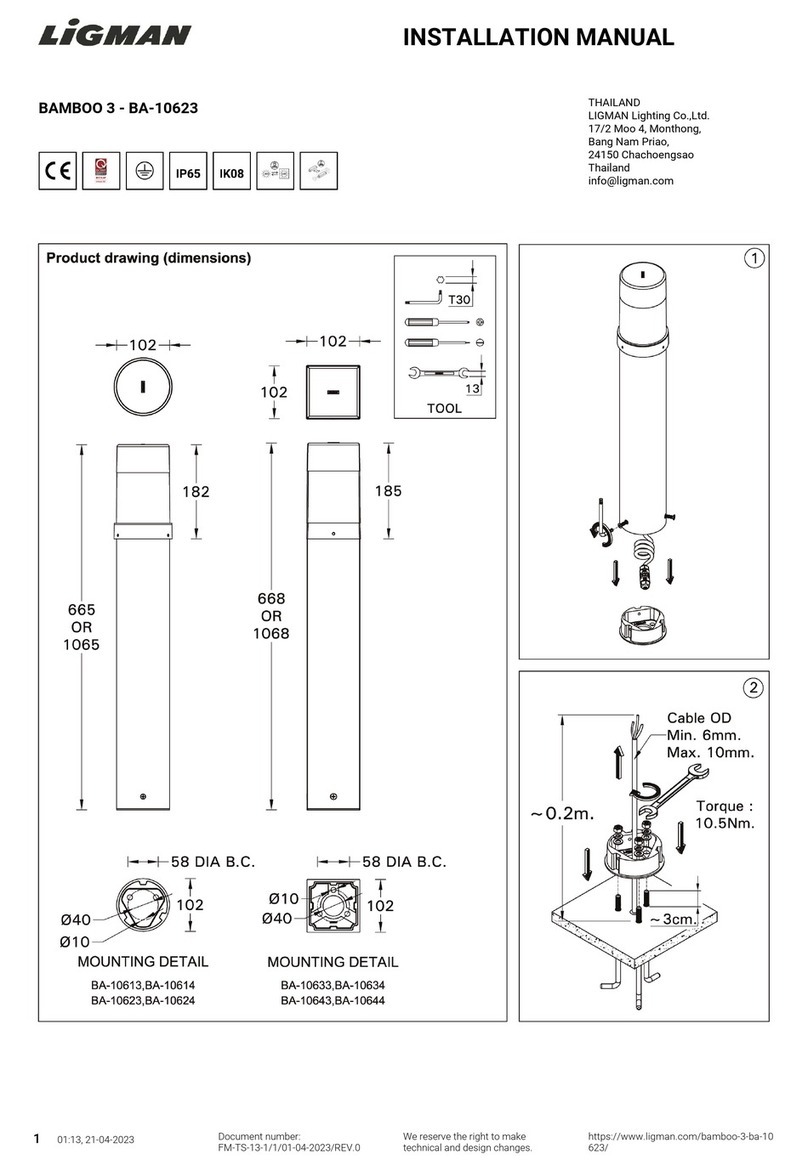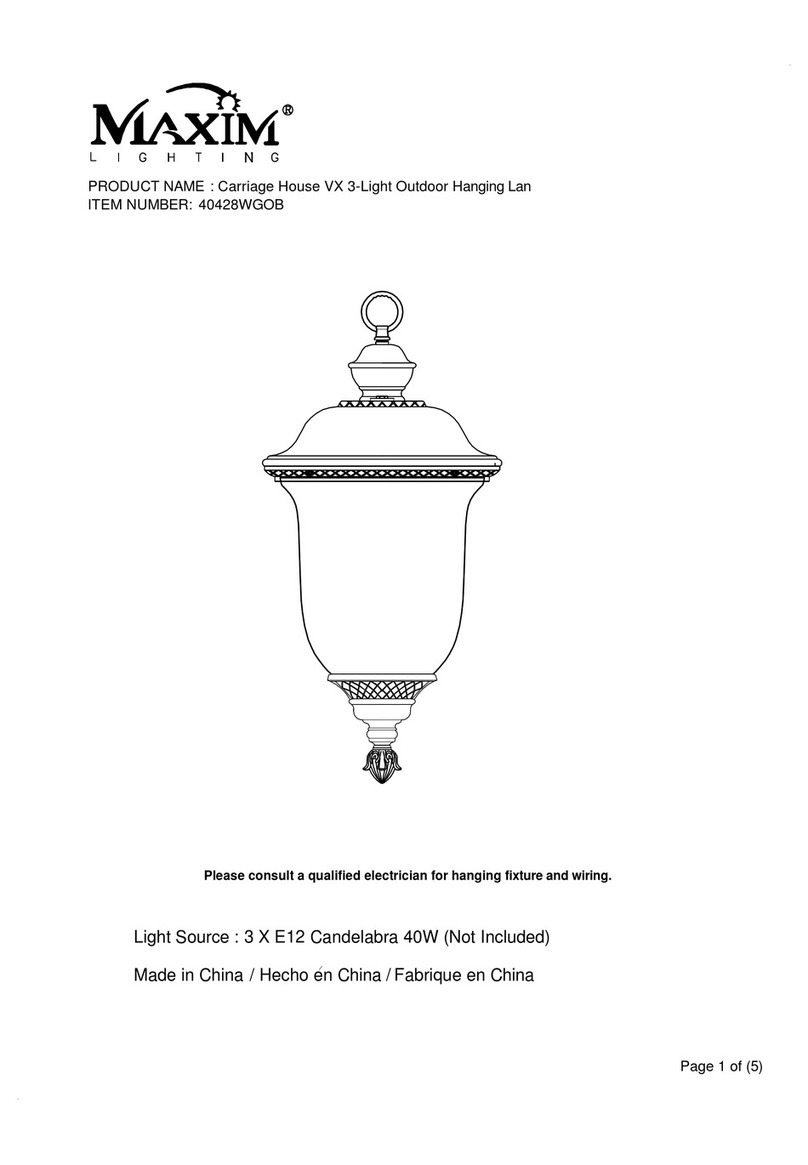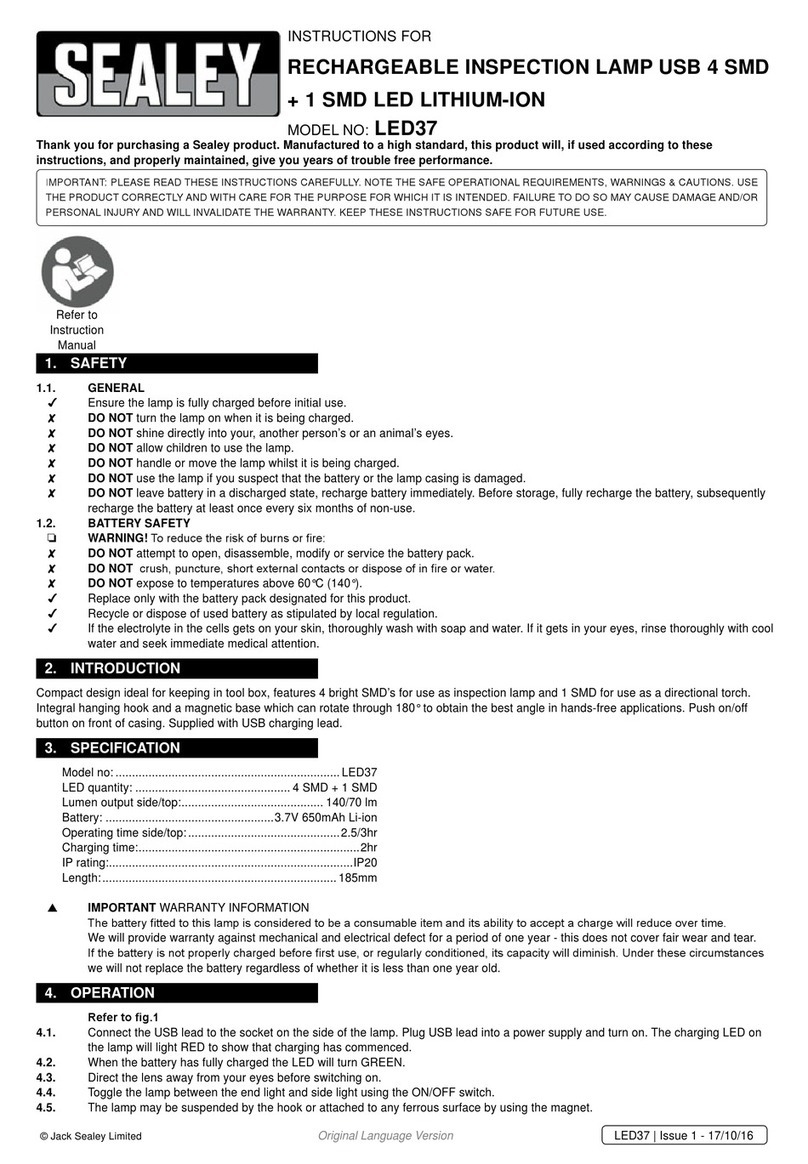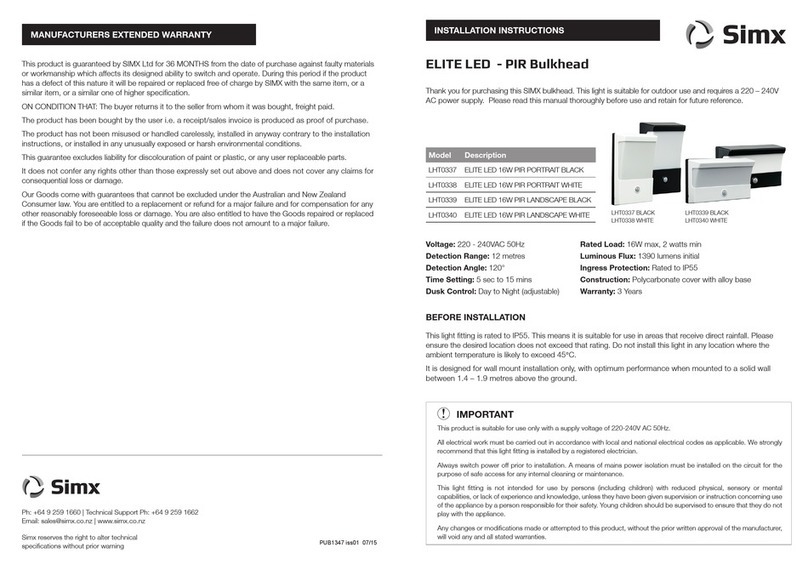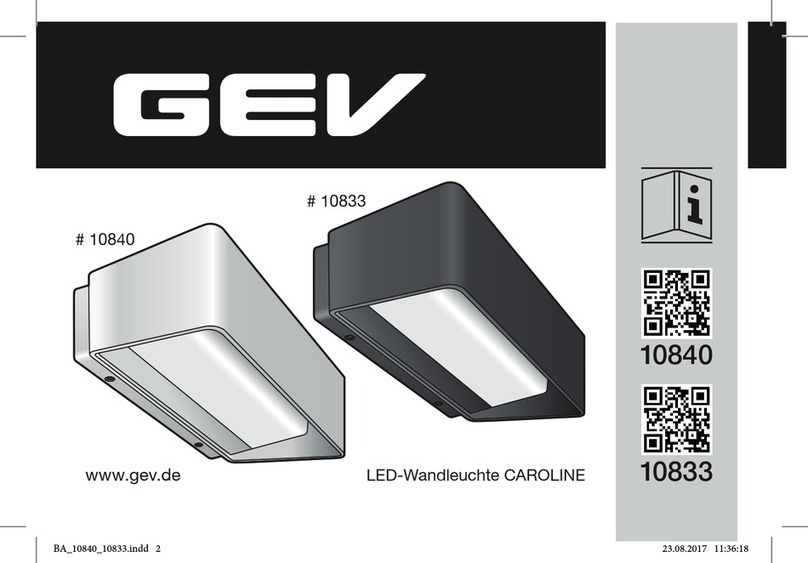
page 2 of 2
common (smooth)
hot (ribbed)
body
fixture cable
supply cable
cover
LOW VOLTAGE CABLE CONNECTOR INSTRUCTIONS
Low voltage cable connector to be used with 10 or 12 gauge supply cable and 18 gauge fixture cable. Philips recommends
using SPT-3 water resistant (marked "WA", "W" or similar marking) supply cable such as our SCW500-10/BSCW500-10 or our
SCW100-12/BSCW100-12. Philips also recommends ordering the entire system, which includes the power console (maximum
25 Amps, 15 Volts per circuit), fixture(s) (low voltage cable connector included) and supply cable to ensure proper
installation and operation.
When using our supply cable, it can be laid on top of the ground, placed under "ground cover" (that is, shallow burial less
than 6 inches or 15.2 cm deep), or directly buried in accordance with the NEC. If not using our cable, per UL 1838-Standard
for Low Voltage Landscape Lighting Systems, the secondary cable must be SPT-3 or suitable for wet locations, sunlight
resistant and direct burial per UL 493 and sized per UL 1838, and it must be buried less than 6 inches (15.2 cm).
Philips recommends a minimum depth of 4 inches when burying in the lawn to prevent damage from aerators or other lawn
plugging equipment.
The 18 gauge fixture cable (provided with fixture) must be protected by routing in close proximity to the fixture or secured to
a building structure such as a house or deck. The fixture cable must be cut off so that it is connected to the low voltage
cable connector within 6 inches (15.2 cm) of the fixture or the building structure. When making an underground connection
to the 10 or 12 gauge supply cable (not provided), the fixture cable must not be buried more than 6 inches (15.2 cm).
WARNING-Mount the luminaire in or on non-combustible mounting surfaces only.
WARNING-Risk of Electric Shock. Install all luminaires 10 feet (3.05m) or more from a pool, spa, or fountain.
Connect the supply cable to the terminals on the power console (transformer) and turn ON.
1.
Disassemble the connector by removing the Phillips head screw.
2.
Inspect the connector to ensure the prongs are straight. If the prongs are bent, straighten with pliers.3.
Insert the end of the fixture cable into the square opening in the connector body. Bend wire over so that wire is laying in4.
the recess marked '18 GA'. This will help hold the wire in place while performing steps 5 and 6. Only 2-wire cable is to be
used and the common (smooth) wire and hot (ribbed) wires must be oriented as shown.
Press the supply cable into the recess marked '10,12/2 GA' on the connector body. Again the common (smooth) wires5.
and the hot (ribbed) wires must be oriented as shown.
Press the connector cover onto the connector body, making sure the screw holes line up with each other.6.
Assemble the connector by tightening the Phillips head screw. NOTE: Make sure the metal prongs in the connector pierce
7.
all 4 wires; the fixture will light as the prongs pierce the wires.
screw
ASSEMBLY
Connect spade terminals on low voltage wire to
screws on back of lamp. Insert lamp into rubber
holder. Insert lamp assembly into PVC housing and tilt
at desired angle. Do not pull excess low voltage wire
through hole in rubber lamp holder. Leave
approximately 1 ft. of wire inside rubber holder for
easier future re-lamping or adjustment of tilt angle.
Keep end of wire with low voltage connector outside
of housing and insert fixture into gravel or sand lined
hole as shown above. Using instructions on reverse
side of this sheet, connect low voltage wire to supply
cable.
IMPORTANT
To avoid fixture failure due to heat from concentrated
beam of PAR 36 lamp, be sure to aim the lamp so that
the direct beam is not striking the PVC housing.
MAINTENANCE
Proper maintenance of this product will extend the
fixture life. Clean lamp regularly and remove debris
such as leaves or grass, etc.
EXCAVATION
Excavate soil for fixture placement. Contour the hole
to the shape of the fixture, allowing for an additional
3" min. around and under the fixture for placement
of granular material.
DRAINAGE
Fixture housing should be surrounded by a 3" min. layer
of sand or gravel to insure proper drainage. It is
recommended that fixtures not be placed in low
locations where water could accumulate and stand for
long periodsof time. Hilling up earth around the fixture
will promote good water run-off and prevent debris
accumulation.
CAUTION
Fixture must not be installed in insulating materials such
as vermiculite, bark, etc. for the full depth of the fixture.
Installation in these materials may cause the fixture to
overheat and void the warranty. Surface use of these
materials acceptable.
Regularly check lens and keep it cleared of debris
(mulch, leaves, etc.) as this could cause a fire.
32000624, revision J
